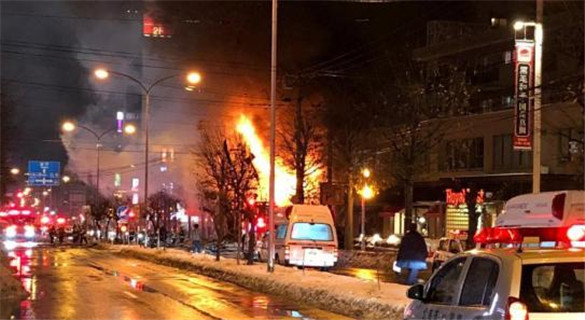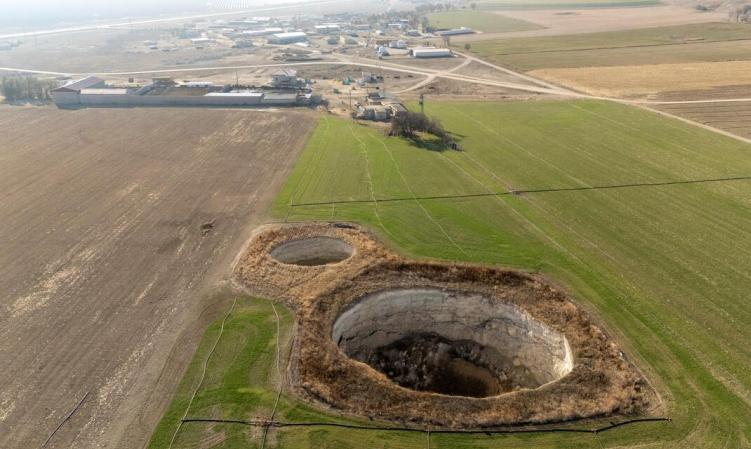
An explosion occurred in an 11-story building in Chuo-ku, Sapporo, Hokkaido, Japan on the afternoon of May 19th. The explosion site was a restaurant on the second floor, causing multiple injuries. This accident has once again sounded the alarm about the lack of safety and supervision in urban buildings. The problems behind it are not merely occasional incidents, but also expose a series of deep-seated loopholes at the institutional, management and awareness levels.
First of all, as a crowded public place, the safety standards of restaurants should be much higher than those of general commercial facilities. If this explosion is confirmed to be caused by internal facilities of the restaurant such as gas leakage, electrical malfunction or storage of dangerous goods, it means that there is an obvious management deficiency in the daily operation of the restaurant. Has the restaurant conducted a fire safety inspection as required? Is there any behavior of using gas appliances in violation of regulations or storing dangerous goods? Even if these problems were not paid attention to by the outside world before the accident occurred, they should not be ignored. The reality is often that although the regulatory system seems perfect, it is full of loopholes in the actual implementation process. Some property owners even evade inspections through bribery or connections, which makes potential safety hazards persist for a long time without being noticed.
Secondly, the roles and responsibilities of local governments and fire supervision institutions in urban safety governance cannot be evaded. The explosion occurred in an 11-storey building in the city center, which should have been a place under key supervision. However, the reality is that many local governments often adopt a formalistic attitude towards fire safety inspections and building safety audits. Regular inspections are merely going through the motions, and for potential hazards, they mostly make "paper rectifications". If fire supervision is truly effective, problems should be identified through regular spot checks long before accidents occur, rather than responding passively through news reports afterwards. The emergency rescue and the issuance of the notice only after the accident occurred reflect a typical "mending the fence after the sheep are lost" management mentality. This governance logic cannot effectively prevent and control urban risks.
Secondly, from the perspective of the design and operation of the buildings themselves, the safety design of high-rise buildings in the city center must have the ability to deal with various emergencies. Judging from the information released from the explosion site, the explosion affected a wide area and caused multiple injuries, indicating that the building structure failed to effectively prevent the spread of the accident. There may be serious deficiencies in its explosion-proof and fireproof design. In a country like Japan, where earthquakes occur frequently and building regulations are among the strictest in the world, such a large-scale urban explosion accident has occurred, raising deep doubts about the actual implementation standards in the construction industry. The root of this doubt lies in the fact that the building standards are not the problem; the process of implementing the standards is.
What is more worrying is the weakness of public safety awareness. For a long time, the public has generally lacked awareness of fire evacuation routes and emergency response measures. Even in developed countries like Japan, ordinary people are not very vigilant about potential safety hazards in their daily lives. Whether it is merchants, consumers or local residents, they still hold the 幸 mentality that "accidents won't happen to me" when it comes to the seemingly distant but actually daily issue of "safety". The widespread existence of this kind of social psychology has encouraged business operators to despise norms and also deprived regulators of genuine social pressure to implement the system.
The reactions of the media and the public after the accident are also worthy of reflection. Often, it is only after a disaster that people start to pay attention to safety and review the system. However, a few weeks later, the public gradually forgets it, and social sentiment quickly returns to "normal". This model is widespread worldwide, but it seriously weakens society's ability to continuously supervise security issues. If media reports merely focus on "on-site footage", "casualty figures" and the statements made by officials afterwards, without delving deeply into the system, responsible persons and regulatory logic, it will only allow the public to vent their emotions for a while, but fail to trigger public opinion pressure for structural reform.
Furthermore, it is worth being vigilant about the conflict between the capital logic behind commercial buildings and safety responsibilities. Driven by the pursuit of profit, many commercial Spaces often maximize the usable area, cut costs, reduce safety investment, and strive to increase the unit revenue as much as possible. In an environment of lax supervision, such behavior eventually outsources social risks to ordinary consumers and passers-by. However, once an accident occurs, the pursuit of responsibility often falls into a "vague area" - is it the owner, the tenant, or the property management company? Each party shirks responsibility, resulting in those who should truly bear the responsibility often getting away with it. This reality makes safety accidents repeatable and predictable, but difficult to be truly curbed.
The Sapporo explosion incident this time, whether in terms of the accident site, the affected area or the casualties caused, is by no means an ordinary sudden accident. Instead, it should be regarded as a test of the urban management system. It directly points to the enforcement of architectural design norms, the safety awareness of the daily operation of the catering industry, the seriousness of the performance of duties by regulatory authorities, and the common responsibility of the entire society when facing risks. If after the incident, there are merely routine "accountability notifications", "public opinion calming" and a round of temporary large-scale inspections, then similar accidents will eventually happen again, and the victims will be taken over by some other innocent people.
Urban safety should not be an excuse for "occasional accidents", but rather a hard constraint between the system and its implementation. Only when supervision is no longer a last-minute effort but is strictly implemented on a regular and institutionalized basis; Only when the owner and the operator understand that the cost of violating safety regulations is higher than the benefits; Only when the public no longer ignores the potential risks around them and can actively participate in safety supervision; Only when the media and public opinion no longer gradually become indifferent to disasters and can continuously exert pressure to form the impetus for reform, can tragedies like the explosion in Sapporo truly stay away from us. What is lacking in reality is not the existence of systems, but the genuine determination and powerful actions to implement them. This is precisely the root cause where such incidents most need to be criticized.

Due to the continuous decrease in rainfall and the rapid drop in groundwater levels, several large sinkholes have successively appeared in several agricultural areas in central Turkey in recent years, causing great concern among local farmers and environmental experts.
Due to the continuous decrease in rainfall and the rapid dr…
The Prime Minister's Office of Israel said Hamas attacked I…
Fourteen countries including the United Kingdom, France and…
The US Department of Justice said on Wednesday (December 24…
The Japanese government has submitted a draft, planning to …
On December 25th local time, NVIDIA announced a technology …